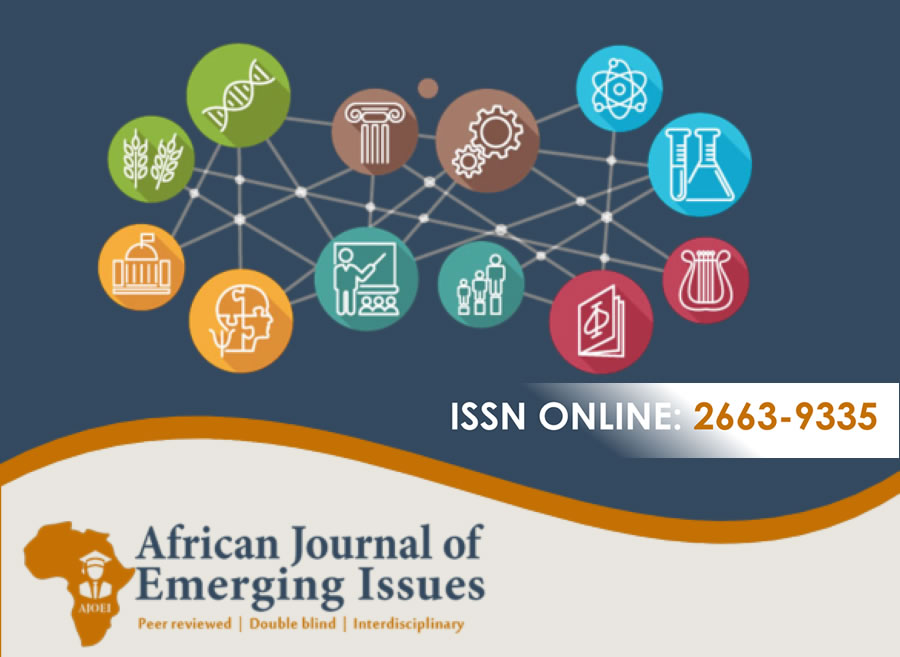EFFECT OF DEBT RESTRUCTURING STRATEGY ON THE FINANCIAL PERFORMANCE OF COUNTY GOVERNMENT OF BUNGOMA
Abstract
Purpose of Study: This study sought to examine the effect of debt restructuring strategy on the financial performance of the County Government of Bungoma.
Problem Statement: County governments in Kenya play a pivotal role in advancing economic growth, social development and the realization of devolution objectives. However, despite these financing mechanisms, many devolved units continue to face persistent fiscal stress due to rising expenditure demands, revenue shortfalls and accumulation of pending bills. In Bungoma County, financial performance remains below optimal levels despite significant allocations from both national transfers and internally generated revenues.
Methodology: The study adopted a correlational research design and targeted 86 staff at the county government of Bungoma involved in credit management. The study used a census technique and adopted a correlational research design. Primary data was collected through a structured questionnaire. Both descriptive and inferential statistics were employed in the study. After analysis, data was presented in the form of tables.
Result: The findings revealed that a unit increase in debt restructuring strategy would lead to a 0.323 improvement in the financial performance of the County Government of Bungoma. From the findings, the study concluded that debt restructuring strategy has a statistically significant effect on the financial performance of the County Government of Bungoma.
Recommendation: To optimize debt management, the County Government of Bungoma should consider extending payment terms for debtors where feasible to foster goodwill and improve repayment rates.
Keywords: Debt Restructuring Strategy, Financial Performance, County Government
References
Abiola, R., & Adedoyin, L. (2020). Debt rescheduling and fiscal management in Nigerian state governments. Journal of Public Administration and Policy, 12(3), 45–59.
Barasa, P., Tibbs, M., & Shitseswa, R. (2023). Influence of debt restructuring strategy implementation on performance of selected commercial banks in Kisumu Kenya. International Journal of Finance and Accounting Research, 8(2), 101–115.
Fama, E. F., & French, K. R. (2016). Dissecting anomalies with a five-factor model. The Review of Financial Studies, 29(1), 69–103.
Kariuki, J., & Kithinji, A. (2021). Debt restructuring strategies and fiscal sustainability in public entities. African Journal of Economics and Finance, 13(2), 77–92.
Kilonzo, P. (2023). Debt restructuring and fiscal sustainability in East African counties. East African Journal of Economics, Policy and Development, 4(1), 55–70.
Kimani, D., & Mangu, P. (2019). Debt restructuring models and public sector efficiency: A study of government organizations in Kenya. Journal of Public Finance and Policy, 11(4), 211–229.
Kraus, A., & Litzenberger, R. H. (1973). A state‐preference model of optimal financial leverage. The Journal of Finance, 28(4), 911–922.
Makanga, J. (2015). Optimal capital structure and firm value: Evidence from emerging markets. Journal of Business and Economic Studies, 7(3), 144–159.
Makori, D., & Chege, S. (2021). Debt restructuring strategies and financial performance of county governments in Kenya. African Journal of Accounting and Public Finance, 6(2), 89–104.
Modigliani, F., & Miller, M. H. (1963). Corporate income taxes and the cost of capital: A correction. The American Economic Review, 53(3), 433–443.
Modigliani, F., & Miller, M. H. (1990). The cost of capital, corporation finance and the theory of investment. The American Economic Review, 48(3), 261–297.
Mugisha, J. (2022). Debt restructuring in Latin America and Europe: Lessons for developing economies. Global Journal of Economics and Policy, 9(2), 34–49.
Muturi, K., & Njeru, P. (2023). Debt restructuring practices in the Kenyan public sector: A case of devolved units. Kenya Journal of Finance and Economics, 14(1), 22–38.
Myers, S. C. (2002). Capital structure. The Journal of Economic Perspectives, 15(2), 81–102.
Nyang’au, P., & Odhiambo, M. (2021). Debt management and service delivery in devolved governments in Kenya. Journal of African Public Administration and Management, 3(1), 112–127.
Office of the Controller of Budget. (2023). Annual County Governments Budget Implementation Review Report. Nairobi: Government Printer.
Oketch, G., & Mutua, J. (2022). Political economy of debt restructuring in East Africa. African Journal of Governance and Development, 5(2), 88–104.
Omondi, S., & Wanjiru, L. (2021). Debt restructuring and fiscal sustainability of municipalities in South Africa. Journal of Development Finance, 8(1), 59–73.
Pitelis, C., & Wang, Y. (2023). Debt restructuring and public sector performance in U.S. municipalities. Journal of Public Budgeting, Accounting & Financial Management, 35(1), 1–18.
Rajan, R. G., & Zingales, L. (2014). What do we know about capital structure? Some evidence from international data. The Journal of Finance, 50(5), 1421–1460.
Shang, L., & Okorie, C. (2023). Impact of debt restructuring strategies on financial sustainability of multinational corporations. International Journal of Corporate Finance, 12(3), 77–95.
Titman, S., & Wessels, R. (2017). The determinants of capital structure choice. The Journal of Finance, 43(1), 1–19.
Wang, H. (2018). Debt restructuring and firm performance in Southeast Asia. Asian Journal of Business and Economics, 10(2), 89–104.
Wanjiku, M., & Otieno, G. (2018). Debt restructuring practices in Nairobi County Government, Kenya. African Journal of Public Finance, 9(1), 66–81.
Waweru, T. (2023). Debt restructuring and financial accountability in Kenyan counties. Journal of Public Finance and Policy, 14(2), 120–137.





